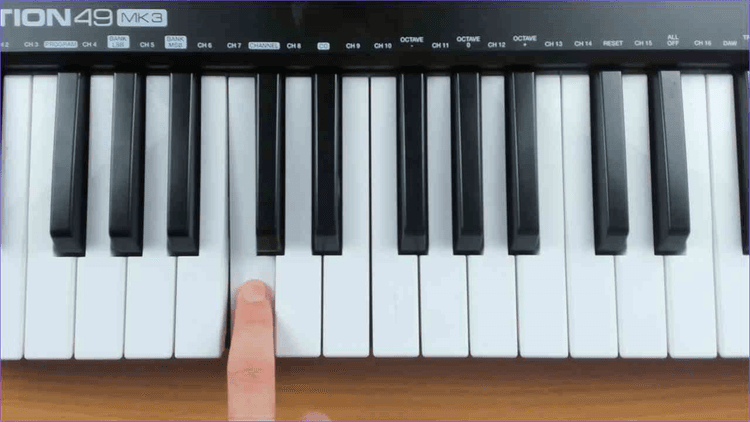Myths about teaching can hold you back
- Year 7
Adding an accompaniment to a melody
I can play the melody for Ode to Joy with an accompaniment.
- Year 7
Adding an accompaniment to a melody
I can play the melody for Ode to Joy with an accompaniment.
These resources will be removed by end of Summer Term 2025.
Switch to our new teaching resources now - designed by teachers and leading subject experts, and tested in classrooms.
These resources were created for remote use during the pandemic and are not designed for classroom teaching.
Lesson details
Key learning points
- A semibreve is a four beat note and the main note duration in the accompaniment of Ode to Joy.
- The accompaniment to Ode to Joy is played with the left hand using the notes C and G.
- The melody and accompaniment are played together on the first beat of each bar.
- A final performance of the melody and accompaniment with attention to pulse, dynamics and tempo.
Keywords
Accompaniment - An accompaniment is a part in the music that supports the melody.
Semibreve - A semibreve is a note lasting four beats.
System - A system represents all the instruments that play at the same time on a score.
Common misconception
Pupils misinterpret the score and think the accompaniment is the second line of the melody.
Encourage pupils to follow the score through when listening to the music and reinforce that both lines are part of the same system.
To help you plan your year 7 music lesson on: Adding an accompaniment to a melody, download all teaching resources for free and adapt to suit your pupils' needs...
To help you plan your year 7 music lesson on: Adding an accompaniment to a melody, download all teaching resources for free and adapt to suit your pupils' needs.
The starter quiz will activate and check your pupils' prior knowledge, with versions available both with and without answers in PDF format.
We use learning cycles to break down learning into key concepts or ideas linked to the learning outcome. Each learning cycle features explanations with checks for understanding and practice tasks with feedback. All of this is found in our slide decks, ready for you to download and edit. The practice tasks are also available as printable worksheets and some lessons have additional materials with extra material you might need for teaching the lesson.
The assessment exit quiz will test your pupils' understanding of the key learning points.
Our video is a tool for planning, showing how other teachers might teach the lesson, offering helpful tips, modelled explanations and inspiration for your own delivery in the classroom. Plus, you can set it as homework or revision for pupils and keep their learning on track by sharing an online pupil version of this lesson.
Explore more key stage 3 music lessons from the Keyboard fundamentals unit, dive into the full secondary music curriculum, or learn more about lesson planning.

Equipment
Keyboards
Licence
Prior knowledge starter quiz
6 Questions
Q1.Match the words with their definitions.
A shorter section of a melody
The steady feel of the beat
A visual representation of the music you are hearing
Q2.Which key is the keyboard player pressing here?

Q3.What does it mean to keep to a pulse when performing?
Q4.Match the words with their definitions.
A note lasting half a beat
A note lasting one beat
A note lasting two beats
Q5.Which two of the following refer to playing expressively?
Q6.Which score does not contain an error in the first two bars of Ode to Joy?



Assessment exit quiz
6 Questions
Q1.The key to the left of the pair of black notes is:
Q2.Which key is most commonly mistaken for C?
Q3.How many beats is a semibreve?
Q4.Which two of the following best describe an accompaniment?
Q5.Starting with the shorter value put these notes in order.
Q6.Which bar has the largest number of beats?





